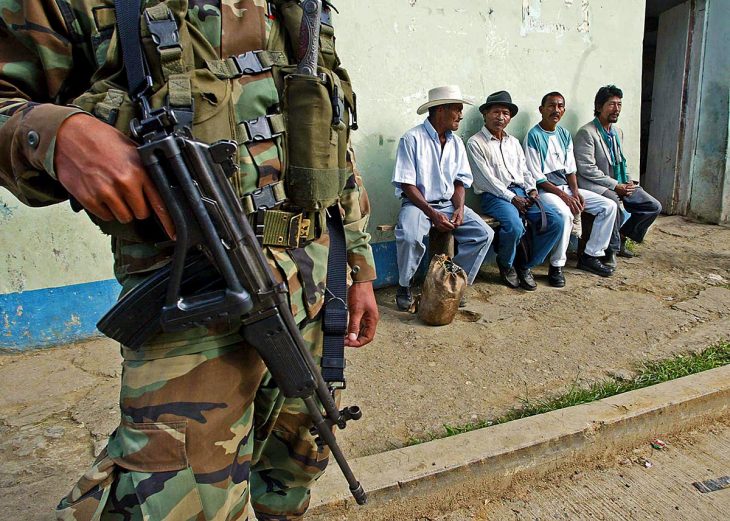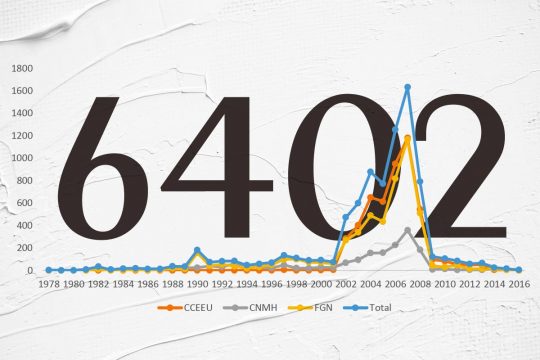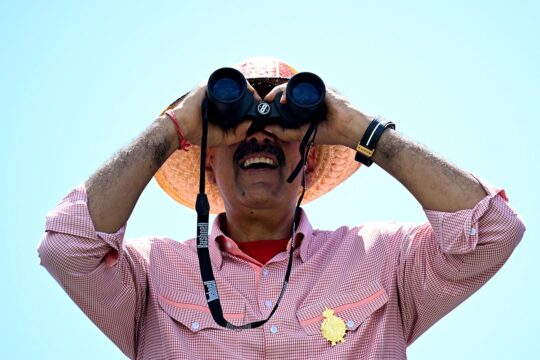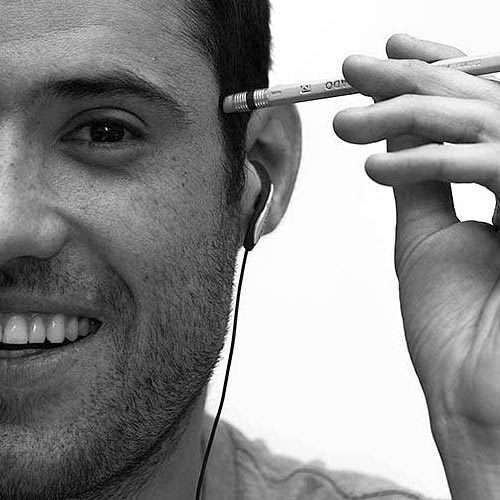Three and a half years after opening its doors and following three years of investigation, Colombia’s Special Jurisdiction for Peace unveiled its second batch of indictments over the past two weeks. In two separate decisions it accused 25 former Army officials of having murdered 247 civilians and then unlawfully passing them off as rebels killed in combat, a tragedy that has appalled Colombians for over a decade and that became euphemistically known as ‘false positives’.
First, on July 6, the tribunal – known by Colombians as the JEP – charged six officers, three non-commissioned officers and one civilian with 120 extrajudicial executions, 24 forced disappearances and one attempted murder in Catatumbo, a mountainous zone on the border with Venezuela between 2007 and 2008. Then, on July 15, it followed up with a second indictment, charging eight officers, four non-commissioned officers and three soldiers with 127 similar executions in the northern Caribbean coast between 2002 and 2003.
“Instead of searching for guerrilla commandos high in the mountains and pursuing paramilitary strongholds – and engaging in legitimate combat with them – [they] preferred to kill defenceless civilians,” Catalina Díaz, one of three justices leading the investigation, said during the live-streamed hearing. “They were not isolated acts or committed spontaneously by Army members [but] part of a generalized and systematic attack against the civilian population,” justice Oscar Parra echoed her a week later.
This marks the first time the special tribunal stemming from the 2016 peace deal brings charges against state actors, following its January accusation against eight former commanders of the Revolutionary Armed Forces of Colombia (FARC) over kidnappings. In both cases the tribunal ruled that these extrajudicial executions constitute “war crimes” and “crimes against humanity”, just as it did with FARC.
The indictees now have six weeks to ponder which road to navigate in the Colombian transitional justice’s two-track system. If they accept the court’s findings and acknowledge their responsibility, as well as contribute with the truth and personally redress victims, they may receive 5-to-8-year sentences in a non-prison setting. If they reject its findings, their case would move to an adversarial system and, if found guilty, would face 15-to-20-year prison sentences.
Showing a broader criminal pattern
“Case 03” is one of the first seven macro-cases opened by the transitional justice’s judicial arm and one of the two specifically focusing on Colombian state agents’ deeds. Over the past three years, the JEP has documented the plight of 397 victims who are now accredited as parties to the case, usually relatives of the young men aged 25 to 35 who were executed. It did so using 36 reports submitted by different parties, including 32 from victims and indigenous organisations, two from the Attorney General’s Office and two from the Inspector General’s Office, as well as hundreds of military dossiers and in-site inspections.
The JEP also spoke extensively with those standing accused. In lengthy confidential hearings and written testimonies, at least 113 former Army officials – including several generals and one former Army commander – have answered the tribunal’s questions regarding ‘false positives’. Hours of videos and hundreds of pages in transcriptions were then transmitted to victims so they could confront their captors’ accounts, with at least 14 organisations or groups submitting observations and questions.
These two indictments are part of a broader probe on extrajudicial executions between 2002 and 2008, a six-year period coinciding with Alvaro Uribe’s administration in which the JEP deems that at least 6.402 such murders took place. In March, the special tribunal laid down its criteria to build the case and explained which specific regions, military units and years it will focus on to illuminate the broader criminal pattern. In line with this approach they termed “from the ground up”, justices will first present indictments in six sub-cases – beginning with these two – and use these to glean information on the underlying patterns of behaviour and the institutional norms and culture that allowed such crimes to occur.
This means that after bringing charges against these and other officers with regional command, the JEP’s Judicial Panel for Acknowledgment will then present its case against those most responsible at the top, potentially including members of the top brass of the Armed Forces and the Defence Ministry during those years.
Different methods, same crime
After studying all of this material, in its most recent 401-page indictment, the JEP identified two distinct criminal patterns that occurred within the 2nd Artillery Battalion ‘La Popa’ that operated in the the northern departments of Cesar and La Guajira.
Between 2002 and 2003, this military unit falsely presented 75 local persons as members of FARC or National Liberation Army (ELN) guerrillas killed in combat, in cahoots with local paramilitary groups. Then, from 2003 to 2005, to avoid local communities’ suspicion, battalion members brought 52 civilians from cities like Valledupar or Barranquilla after duping them with fake job offers, murdered them and also presented them as supposed combat kills, says the indictment.
A week before, in its other 287-page decision, the JEP identified the same two behaviours in Catatumbo, but described them as different methods of one same criminal pattern. First, during 2007, members of the 15th Mobile Brigade and the 15th Infantry Battalion ‘General Francisco de Paula Santander’ murdered rural inhabitants who were deemed members of armed groups. After a December 2007 meeting in Ocaña, where communities decried the disappearance of relatives and neighbours, members of those military units began bringing youngsters from other cities, many of them deliberately targeted because they had mental health illnesses or problematic drug use. As Justice Info told, it was the discovery that some victims hailed from Soacha, 635 kilometres away, which finally led to the uncovering of these atrocities in 2008 and to the corrective measures within the Army that former President Juan Manuel Santos described before the Truth and Reconciliation Commission a month ago.
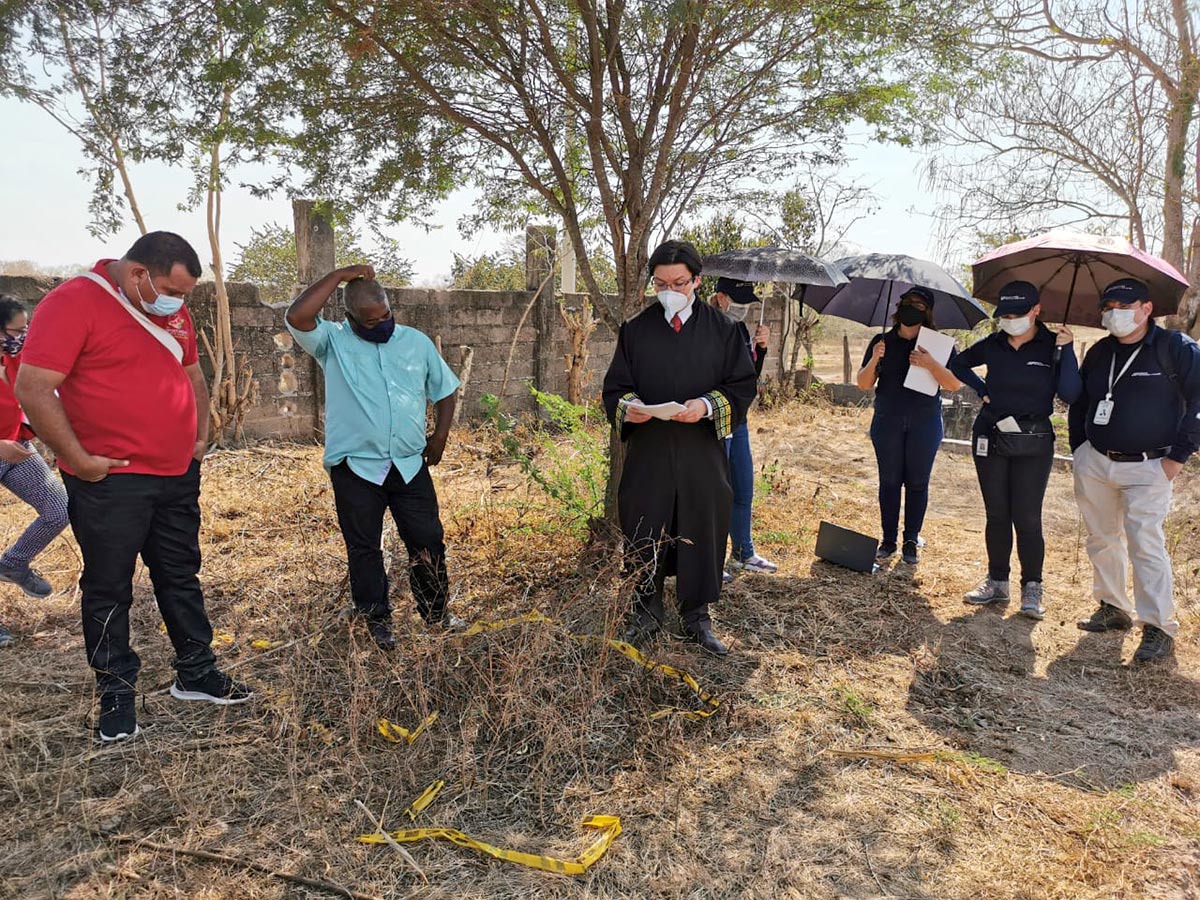
The ‘false positive’ handbook
Perhaps what’s most striking about both indictments is how exhaustively they detail the different modus operandi and strategies used to present civilian homicides as “fictitious operational results”. Although a number of reports and legal decisions over the past decade had illuminated some of these, the JEP’s reconstruction – in response to victims’ truth-seeking requests – painstakingly reveals similar patterns in hundreds of cases.
Both decisions give ample space to how Army officials feigned combat zones and planted evidence to tie their victims to rebel groups, going as far as dressing them in camouflage, moving bodies and contaminating crime scenes before they were processed, destroying personal documents to prevent victim identification and leaving arms and gunpowder traces (known as “legalisation kits”), in what the tribunal describes as “increasingly sophisticated cover-ups”. According to the JEP, there was also a legal mise-en-scène comprising forged operational documents, coordination of factual accounts, threats to witnesses and the destruction of evidence, even after visits from General Carlos Arturo Suárez’s eye-opening 2008 fact-finding mission.
In the end, these crimes and efforts to varnish them with a “guise of legality”, the JEP argues, involved meticulous planning. Tasks ranging from victim selection to cover-up were distributed among soldiers in what justices termed a “division of criminal labour”. Uncorroborated allegations brought forward by paid or criminal informants were enough to seal victims’ fates, without following the steps of the “basic intelligence cycle” to gather, process and verify information.
In order for this to happen, a number of factors were needed. In first place, during those years the Army ascribed a higher value to casualties over arrests and demobilisations, leading the JEP to contend that “defence strategy favoured the body of the enemy fallen in combat as the main indicator of a military effort’s success and, consequently, pressured and encouraged combat casualties”. This sustained pressure from above was, according to the indictment, “not occasional or anecdotal, but permanent [and] daily”, with national and regional commanders fostering competition among military units and drilling this idea in radio transmissions and speeches with language such as “whatever it takes” or “a kill is in order”. Army members were rewarded with days off, cash prizes, paid holidays to the sea (which soldiers dubbed “Caribbean plans”) or medals for bravery, while reluctant soldiers were demoted or punished.
None of this would have been possible, the tribunal concluded, without “the institutional resources of the National Army”, including its funds, its incentives, its administrative procedures and an absence of oversight from those in command, which helped it “to improve, by illegal means, the perception of the security force’s effectiveness”. All of this information was the basis for the JEP’s argument that the criminal patterns were both “systematic” and “widespread”.
Spotlight on indigenous victims
The indictments also underscore how specific population groups were targeted, including unwitting homeless or handicapped persons. One thoroughly documents how the Wiwa and the Kankuamo – two indigenous groups that live in the Sierra Nevada de Santa Marta mountain range – were especially targeted, with the latter accounting for 7% of La Popa battalion’s victims even though they only represent 1% of Cesar department’s population.
The tribunal showed how both indigenous groups were routinely stigmatised by soldiers and how members as young as 13 years old were murdered and passed off as combat kills in the days after the Inter-American Commission on Human Rights granted them precautionary measures, or right before meetings where they gathered to discuss the implementation of those measures.
Given this reality, the JEP designed special participation mechanisms for these groups. For example, on two separate occasions, a hundred Kankuamo Indians gathered in a school within their reservation in Atanquez and over nine-hour sessions pored over the videos in which soldiers described these extra-judicial executions. After seeing footage of the testimonies brought by Justice Oscar Parra and two JEP psychologists, they identified parts where their recollection about the events that occurred over a decade ago differed from the military and came up with new questions for them.
“War crimes and crimes against humanity”
For their role in what it described as “criminal organizations embedded within military units”, the JEP accused 25 officials – including one general, six colonels and four majors – of the war crime of “wilful killing of protected persons” and the crimes against humanity of homicide and forced disappearance. The tribunal’s justices also charged them with homicide of protected persons and forced disappearance under Colombian law. In doing so, it underscored that all victims were civilians and that therefore the military had a legal duty to protect them, including eight rebels killed by La Popa soldiers after being wounded in combat or turning themselves in.
Although five lower-ranking officials among the indictees had already been convicted by the ordinary criminal justice for individual cases between 2012 and 2016, this is the first far-reaching probe that explains how these crimes fit into a broader criminal pattern and traces them higher up in the command chain. Throughout the rest of this year, the JEP will announce similar decisions detailing the actions by military units in four other regions, before moving on to those most responsible for these policies on a national level.
Dilemmas ahead
In the JEP’s two-track system, officials may receive a more lenient sentence if – and only if – they fulfil three conditions: they must acknowledge their responsibility, tell their victims’ relatives the truths they still long for and personally redress them. With most of the defendants registered before the JEP and many of them already enjoying benefits like parole, it seems likely that they’ll accept its indictment. Chances are, however, that parts of the case will move to the tribunal’s prosecution unit and possibly a trial, given that at least three of them seem reluctant.
Colonel Hernán Mejía, who commanded La Popa battalion between 2002 and 2003 and who was the first major officer taken off duty over this scandal, has said he is still reading the decision that accuses him of “activating the criminal plan based on the orders he gave” and having an 87% rate of illegal combat kills. In a cryptic message on Twitter, Mejía – who declared himself a presidential candidate for next year’s election and has been defended by politicians from Uribe and President Iván Duque’s party – stated that he “refuses to bow down” as “enemies celebrate and traitors and cowards rejoice”, promising not to “accept what he did not do”.
A more complex scenario awaits two other high-ranking officials. General Paulino Coronado of the 30th Regiment in Catatumbo has so far not requested admission to the JEP and Colonel Juan Carlos Figueroa, who succeeded Mejía at La Popa, remains a fugitive. Since he has not been seen since July 2019, when migration records show he left Colombia for Paris, the JEP is considering to alert Interpol.
Two other crucial debates are also pending. First, what officials’ sanctions will look like, including whether they will be allowed to fulfil them in military facilities. And second, what will happen with the other 77 soldiers involved in executions committed by both military units and whose legal situation the JEP must also determine. Its decision of whether to prosecute them or not highlights the still thorny debate of selectivity within the tribunal.
Six weeks from now, when these 25 officials are due to announce whether they own up to their crimes, Colombia will come closer to providing victims of extrajudicial executions with the truth, justice and redress they have been seeking for as long as two decades. At the same time, in a strange twist of events, false positives continue to grab world headlines: just last week it was discovered that one of the 21 former Colombian officials presumably involved in the July 7, 2021 assassination of Haitian president Jovenel Moïse stands accused of committing them in Antioquia – another of the six prioritised sub-cases – and left the country without the JEP’s permission.


